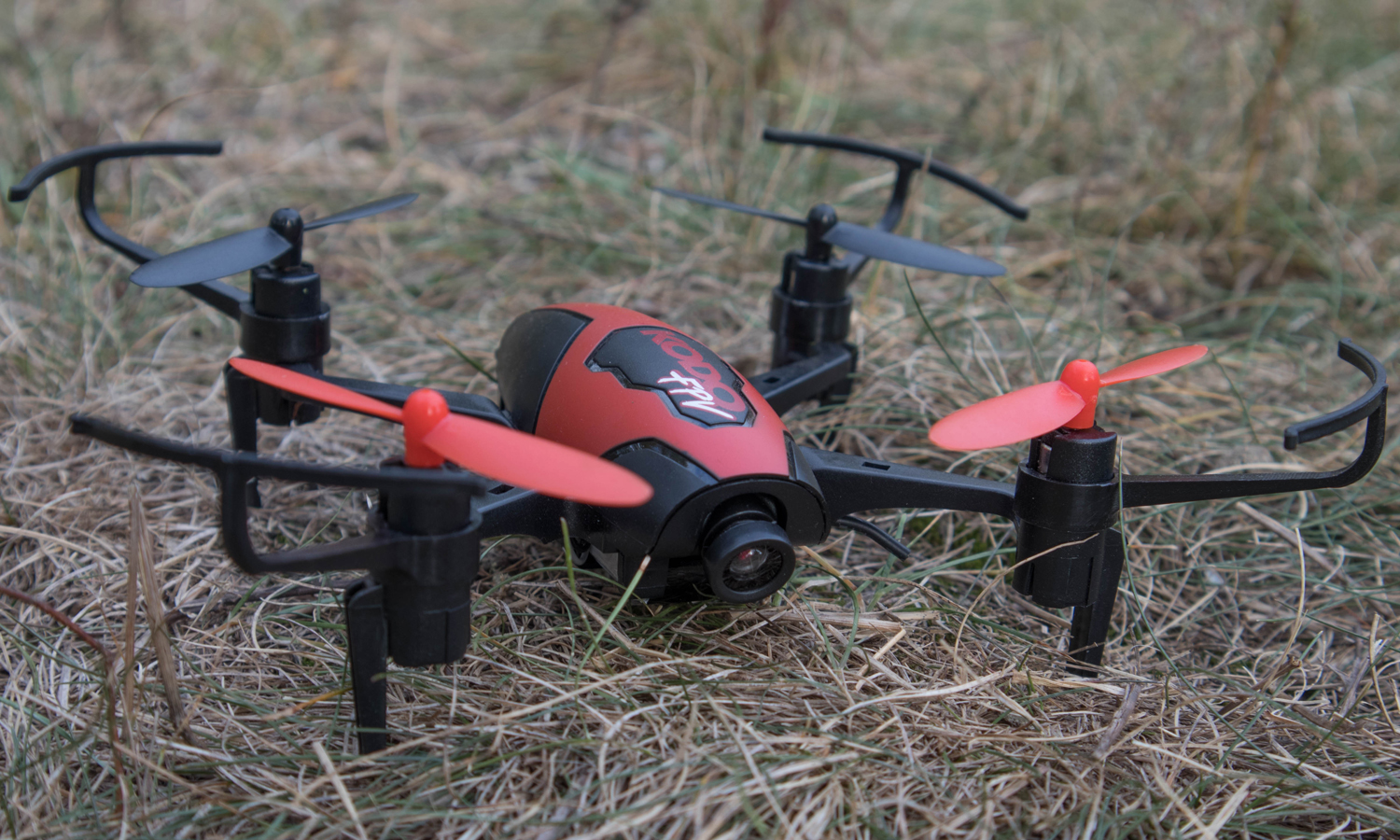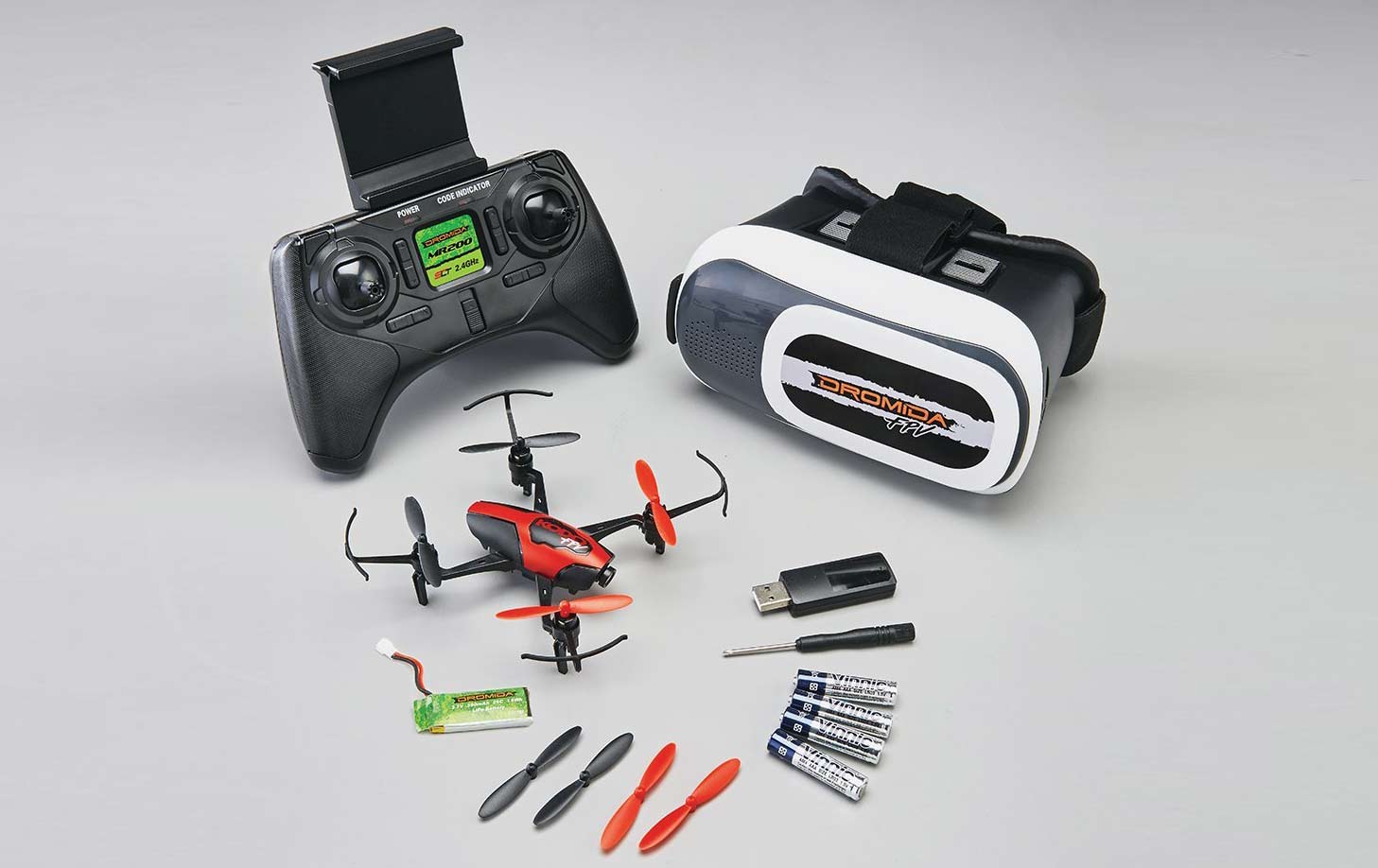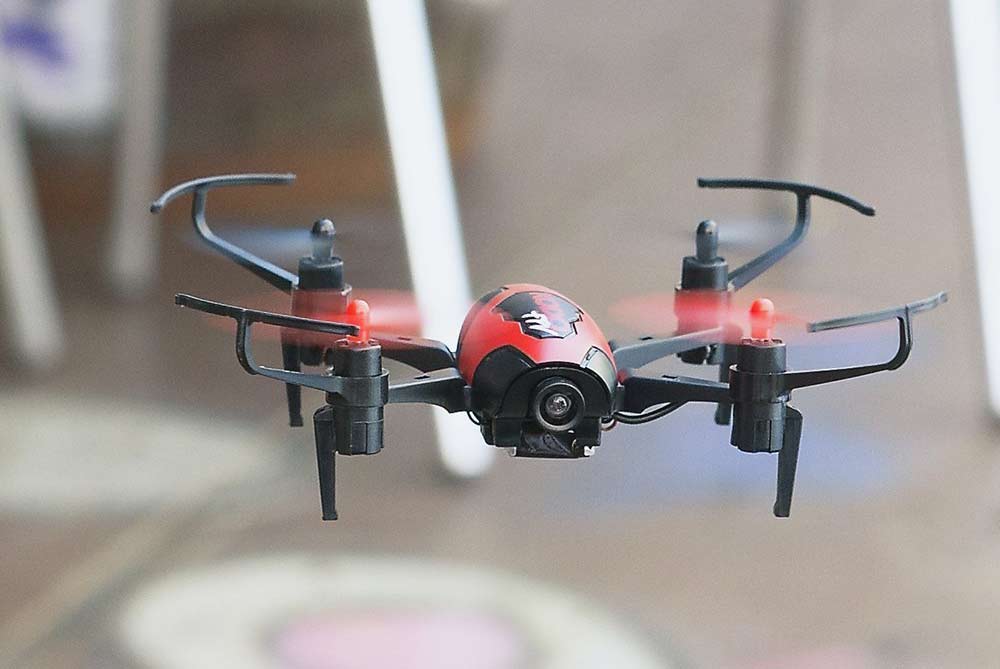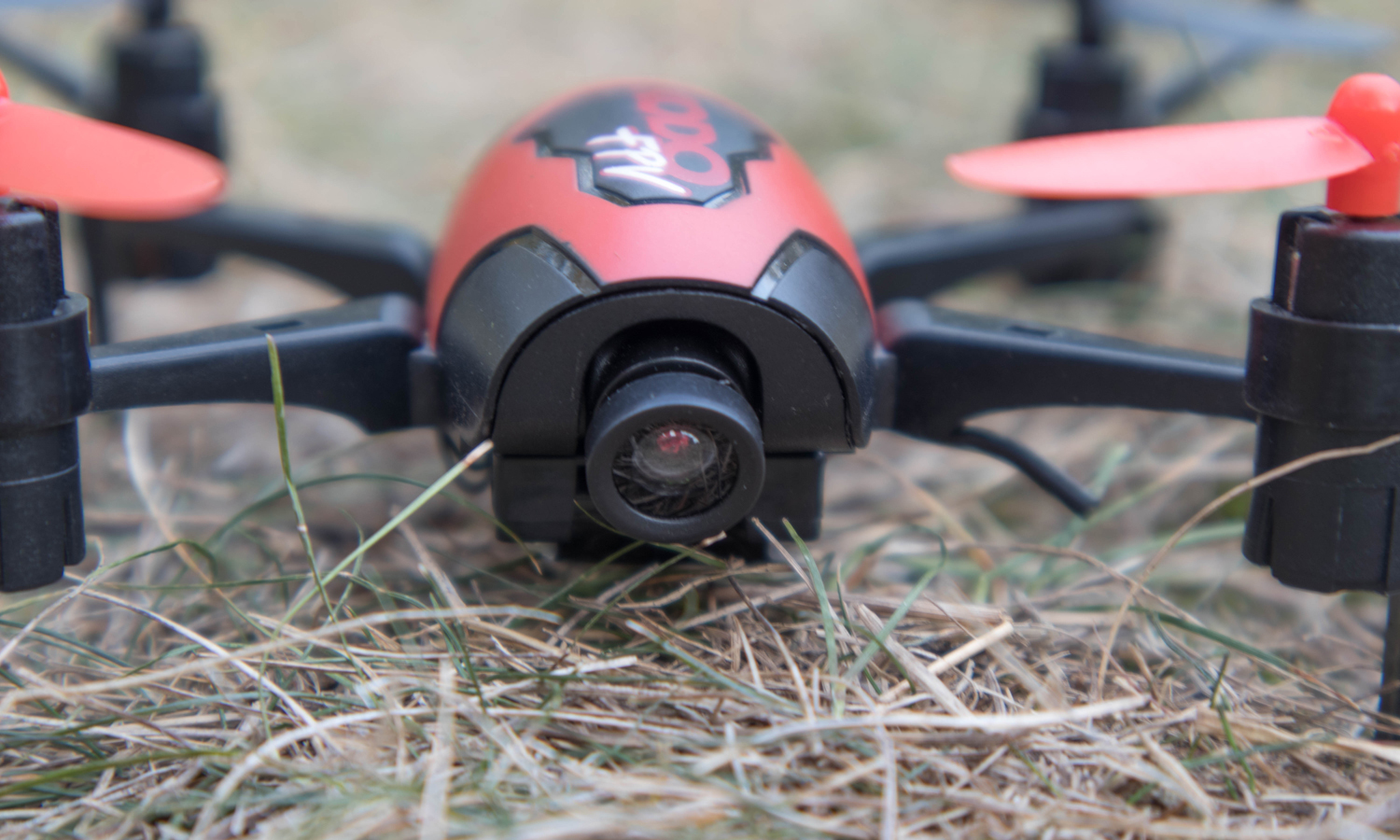Tom's Guide Verdict
Kids and other low-budget pilots will like the FPV features the Kodo offers, but the image quality isn't great.
Pros
- +
Fun to fly
- +
Inexpensive
- +
Comes with FPV goggles
Cons
- -
Video is blocky and jittery, making FPV flight difficult
- -
FPV headset doesn't work with glasses, and is uncomfortable to wear
Why you can trust Tom's Guide
The Dromidia Kodo FPV drone brings first-person-view drone flying to a new low price: $90 gets you the drone, the controller and the FPV headset. Add in your cellphone, and you've got a ready-to-fly FPV drone setup. It's not particularly fancy, though: the drone is small and a bit awkward to fly, and the video quality is lackluster at best. But for the price, it's a fun little drone to fly, and the FPV experience is fun.
Design
The Kodo drone itself is rather small, measuring just 5.5 x 5.5 x 1.75 inches and weighing just 1.5 ounces with the battery installed. At each corner, blade protectors shield the rotors in crashes, and four plastic legs keep it off the ground. The drone is quite tough: Although the blade protectors feel a little flimsy, they and the rest of the drone stood up to numerous crashes and hard landings without problems.

A single red LED at the back helps you find the drone and blinks to indicate a problem. Next to this is the holder for the chewing-gum-size battery, a 350MAh lithium polymer model that sits under the drone body and connects with the included cable. On the front of the body is the camera, which can be manually tilted to point forward, straight down or any angle in between.
FPV Headset
The FPV headset is a large white plastic device that was rather uncomfortable to wear, as it is a little heavy and pokes into the skin.. A slide-out tray holds the cellphone that runs the KodoView app. I had no problem fitting my Note 8 into this tray, although I did have to remove the protective case I keep the phone in.

If you plan on doing a lot of FPV flying and you want to keep your phone looking nice, you'll need to get a thin, low profile case or skin. You can't wear glasses with the FPV headset, but you can adjust the focus for each eyepiece, a definite plus for those, like me, with one eye that is worse than the other.
Controller
The controller is a rather large, clumsy-looking black lump of plastic. Apart from the control sticks, you get switches for power, trim controls and buttons to trigger photo and video taking, plus two flip buttons for aerobatics. On top of the controller is a holder for the cell-phone that runs the KodoView app, available for iOS and Android. This holder had no problem with larger phones like the Samsung Note 8 I tested it with, but it won't work for iPads, mini or otherwise.

Although the controller felt cheap, it fit my hands nicely. My thumbs felt natural on the control sticks and my fingers the same on the shoulder buttons that trigger the various stunts that the drone can perform. The buttons on the front of the controller that trigger the video and photo recording were a little harder to reach, though, as I had to take my thumbs off the control sticks to reach them.
Get instant access to breaking news, the hottest reviews, great deals and helpful tips.
App: Basic
The KodoView app, available for iOS and Android, offers controls to stop and start video and take photos, but you can't control the drone itself: that's all done by the controller. The app offers a decent preview of the image when the drone is still, but it breaks down when the drone turns or moves rapidly, turning momentarily into a fuzzy mess that makes it hard to see where you are. It also has a rather short range: we found that the app lost the connection to the drone at a distance of about 25 feet. By comparison, Parrot's Mambo FPV maintained a connection out to a few hundred feet.
Flight Performance
The Kodo FPV is a quick, responsive drone that is a lot of fun to fly. It responded well to the controls, offering a decent amount of speed and maneuverability. I clocked it at about 10 mph : pretty good for a small drone. It is quite sensitive to wind, though, tipping and flying off in even a slight breeze. This makes it more difficult to fly on gusty days, as you have to be constantly correcting for this when in flight. There is also no GPS or other way to control and correct the position of the drone, so it won't hover in place on breezy days like more expensive drones, such as the Parrot Bebop 2 Power.

The big headset completely fills your field of vision, so you can't glance around the FPV view to check the location of the drone. This is a problem when the drone is nipping around at speed, as the blurry video makes it difficult to keep track of its location, which is essential for FPV flying. It works for slow and controlled flight, but not for fast or tight maneuvers.
Camera Performance
The Kodo FPV drone sends video back to the app running on your cellphone over a 2.4GHz Wi-Fi connection. This video is rather low in resolution: just 640 by 480 pixels, which is lower even than the 720p camera on the Parrot Mambo.

It is also heavily compressed, so the image often degrades into a blocky, blurry mess when the drone turns quickly. This makes navigating with the FPV goggles rather difficult, as it is easy to lose your bearings and thus lose control.
Still images are captured at the same 640 x 480 pixel resolution, but are usually a bit sharper than the video. Neither is anything to write home about, though, and look poor compared with the quality of more expensive drones.
Battery Life
The small, chewing-gum-style battery gives you about 5 minutes of flight time. That's pretty average for small drones like this — though the Mambo lasted nearly twice as long on a charge — and the batteries are a standard type that are easy to swap out. These batteries are charged with the included USB charger, which plugs into any standard USB port, and takes about 20-25 minutes to charge.
Accessories
Dromida offers a wide range of spare parts for the Kodo FPV, including rotor blades ($1.99 a set) and motors ($8.99 for two). Spare batteries are also available, priced at $8.99 each.
Bottom Line
The Kodo FPV is a simple-to-fly drone that offers a lot of features for the price. It doesn't have great image quality, though, and the controls are basic. It's also important to remember that you need a decent smartphone to use the first-person-view (FPV) features of this drone. These issues aside, though, it's a fun little drone that offers a lot of flying for the price, as long as you aren't expecting glorious high-def video of your flights.
Credit: Richard Baguley/Tom's Guide
Richard Baguley has been working as a technology writer and journalist since 1993. As well as contributing to Tom's Guide, he writes for Cnet, T3, Wired and many other publications.
